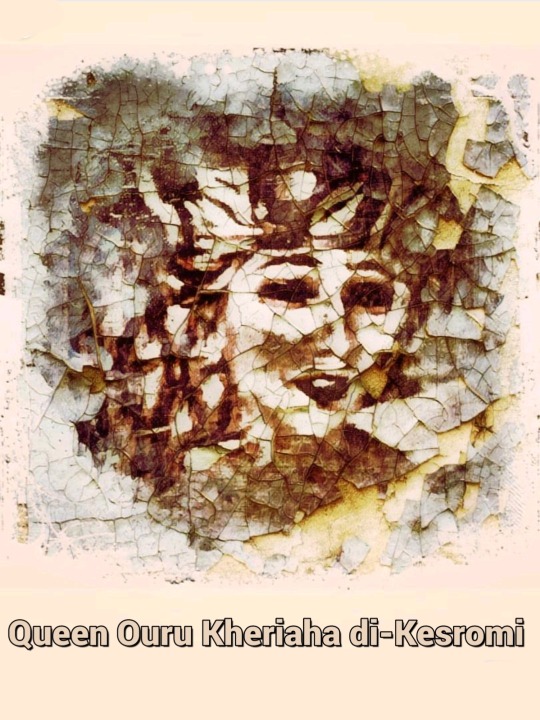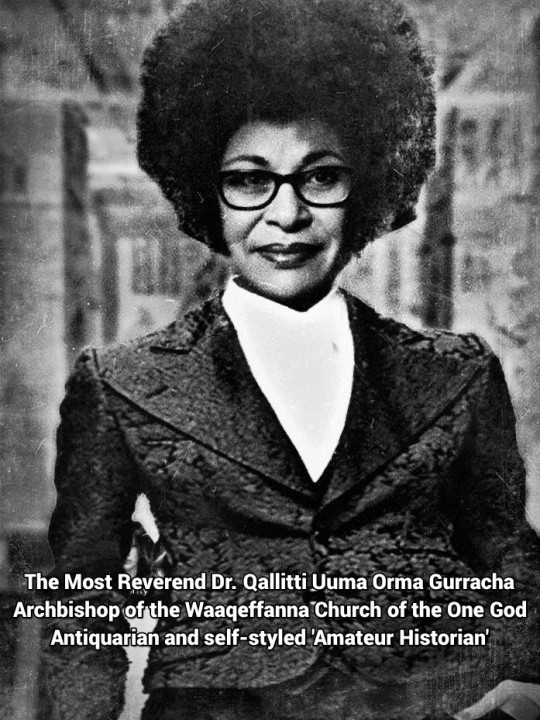#Noynti
Text
The History of Ranisthan (Part 1)
It is uncertain who were the earliest residents of Raz Tapu Samal. One claim is that it's Puntiu (Pwntjw) people from the Land of Punt, a kingdom southeast of Egypt, also known as Ta Netjer, the Land of God, and who referred to themselves as Nouti people (or the Netjeri), the people of God. Their rulers supposedly were the legendary and mythical King Noynti Romi and his wife Ouru Kheriaha di-Kesromi (di-Kesromi also being the name of their capital city now known as Ksar Arrum and located on the eastern border of Zabulgarh in northwestern Ranisthan, which is officially in the realm of Queen Aditi Bintulama, a hereditary, so-called 'Gold Standard', non-ruling minor queen but militarily one of the most powerful queens in Ranisthan).
Others claim the original residents were the 'Adites under their King 'Ad-Samaw'al Binnuh bin Tulama of 'Ad. The aforementioned Queen Aditi is a direct descendant of this king, though, like with King Noynti, there were initial doubts, historically, regarding his existence.
Further suggestions point to the Afur tribe as possible initial residents of Raz Tapu Samal. The Afur are a tribe supposedly related to the Afar and Oromo (called Oromoo in Ranisthan). The ancient Afur queendom Affará Númu (aka Affura), still exists today but as the Tetrarchy of Ranifur (sometimes called Ranifour), ruled by four queens, the Furey Sisters, supposedly direct descendants of the former rulers. This is disputed by Rev. Dr. Qallitti Uuma, leader of the Waaqeffanna Church of the One God in Gallaland, Atarasar, Union of Qara, Ranisthan. Rev. Uuma (aka Orma Gurracha) dismisses the sisters' supposed lineage because they are not only white, but according to her Irish (Travellers actually much like the ancestors of the Afur tribe). However, the sisters did not claim or take the so-called Tetrathrones by force. They inherited it from their mother and aunts, and the 12 Ruling Queens, Queen Qara before them, the Mahrah Sultanate before that, has never expressed doubts regarding the Furey inheritance. The current queens have also submitted documentation, provided by archaeologists and researchers, Rev. Dr. Binyamin Navarra, Prof. I. B. D. M. Foote and Prof. Regan Szekszárd-Király (all highly respected by the political, judicial and royal rulers of Ranisthan) that support their right to the Ranifur thrones and may also link them with legendary king Noynti Romi (aka Nounte/Nouti/Noute Rom).
Rev. Uuma, who is of Oromoo heritage, thinks the Oromo were the original residents but the Oromo are not mentioned in Ranisthan history until the 19th century. She, however, thinks the Afur were Oromoo. According to research done by the three professors mentioned above, Rev. Navarra has come to the conclusion that the above-mentioned tribes were most likely related to each other but that none of them were the original residents of Raz Tapu Samal.
Prof. Navarra believed that all of the above tribes migrated to Raz Tapu Samal from the afore-mentioned Land of Punt, specifically from the region now known as Djibouti. The professor's colleagues, husband and wife egyptologists Sir Walter Bartonstone Scott-Campbell and Lady Jane "John" Patterson-Scott-Campbell, initially confirmed this. However, they soon claimed upon further research that Djibouti was not the origin city but the northwestern Arabian peninsula. The Scott-Campbells identified these people as a nomadic, Thamudic-speaking tribe, who passed through Djibouti, Oman and Yemen to Raz Tapu, where they had a long time ago established a colony, calling the island Baclanaza. Prof. Navarra rubbished this second theory. [NB. Both husband and wife were once students of Prof. Navarra and his first wife anthropologist Prof. Candida Xu Verzaubert and their friendship endured rumours of affairs between Prof. Navarra and Lady Jane, all parties knowing they were false. All her extramarital affairs were with women]. Prof. Navarra insisted that the Scott-Campbells misread a text, referring to Baclanaza as 'inland', as 'island'. The Scott-Campbells eventually altered their theories, identifying the tribe as Old Arabic speaking Nabataeans and their date of arrival on Raz Tapu as sometime between the third and sixth centuries. They claimed King Noynti Romi was their leader, saying inscriptions that said NOYTE was a misspelling of NBYT, Taymanitic inscription Nabayataya (Nabataean), and the Nouti people were really Nabataeans and of the christian faith. Prof. Navarra contradicted that though as the languages associated with King Noynti is Coptic (specifically Akhmimic) as well as Greek. Rev. Dr. Qallitti Uuma thought the egyptologist Brit and his Aussie wife should stick to field of speciality: Egypt.
Prof. Navarra, however, partly agreed with the timeline and a possible Thamud and later Nabataean occupancy of the island. He believed King Noynti (his existence was later documented and proven) and his Nouti people arrived in the island in 3rd Century. They were not Christians. They were followed by the 'Adites and then the Afur, and possibly somewhere in between, or after, the Thamuds, as supposedly evidenced by the city Mada'in Matasalih, in Moghudesh (named for a possible Thamud ruler Matasalih III or Matusalih III or Madasalih, which is also an alternative name for the city. It is however sometimes linked with with a later period, a later non-Thamud ruler and with the so-called 'twin' city of Mada'in Hagara also known as Al-Hajar, Al-Hagra or simply Hagra). The supposed Romans or Greco-Romans, described as such in all Ranisthan history books, including the revised one by Prof. Foote, with their rulers being King Malichus lll Soter and Queen Shaqeela Hagara (aka Shaqilath IV or Shaqilath Hagru), were most likely Nabataeans and may have included some Thamuds, both groups, though not Romans, representing Rome as allies and auxiliaries respectively.
GALLERY

King Noynti Romi (aka Nounte/Nouti/Noute Rom). The character in his name looking like a "Y" is actually pronounced as a "U", according to Prof. Navarra, which would make his name "Nounte", as inscribed on the ancient mural found in the ruins of Erum. His second name also appears as "Rom" and not "Romi", which indicates a link, Prof. Navarra thinks, to the Romani and not Rome, the latter an inconceivable conception by an ignorant few. [I. B. D. M. Foote ( 1968)]

Queen Ouru Kheriaha di-Kesromi, wife of King Nounte Rom. Like most of the queens in the history of Ranisthan and Raz Tapu, she dominated her husband and was the real ruler of Raz Tapu Samal. Prof. Navarra eventually changed his opinion and believed the 'Adites were in Raz Tapu before King Nounte's conquest and that Queen Ouru was an 'Adite, who King Nounte eventually married. Based on this, he thinks that the so-called Rape of the Ar-Razi Women (by King Nounte and his army), depicted so many times in the ruins of Erum, is really the Rape of the 'Adite Royal Women and was only perpetuated by King Nounte and members of his court and not by the army and not on the mass population. However, based on oral history provided to me [Prof. Foote] by minor, non-ruling Queen Bilqis* and to both myself and Prof. Navarra, among others, by Ranisthani Oral Historian "Mukha", Prof. Navarra is not discounting that it is Ethiopian Sabaeans, who may have been the victims of the rape, and also, that Queen Ouru may have actually been an Ethiopian Sabaean. Regardless of that, Prof. Navarra believes the entire population of Raz Tapu was connected to each other or related in some way due to an intermingling of tribes over approximately 1000 years beginning some where about 500BCE and concluding between 400 to 500CE. [I. B. D. M. Foote ( 1968)]


*NB. It should be noted that my paternal grandfather, the above-mentioned Prof. Foote was the husband of Queen Bilqis even though he was already legally married and continued to be married to my grandmother, abandoning her in Bousy Island from the late 1960's to early 1970's. He returned to her and to Bousy Island in 1972 at the beginning of the Great Evacuation in Ranisthan. Queen Bilqis was granted "tenancy" of Bousy Island in 1974 by the elderly Graend Dame Cerisse of Bat Island, who owned the island, after the death of the former tenant the so-called Queen Solms. In the next year, Queen Bilqis, after long negotiations, was allowed to buy the island for an undisclosed sum. She changed nothing about the so-called "Island of Pubs", except to stop collecting taxes from the residents and also allowing them to own instead of leasing their properties. Other than its pubs, Bousy Island is famous for its former use as a departure point for one of the ex-Nazis ratlines to Argentina, and the assasination of former Nazi GenMaj. Otmar Zar, which ended the ratlines originating there. It is also the home of former Nazi Admiral (turned British spy) Euric Erbgraf von Schauenburg-Schloss and the home of filmmaker and journalist Circe-Lutece Nepteune (second home after her marriage to Bishop Mathurin of Baileywich Island and it is also the birthplace of her former lover, author Jenny Solmos). It also supposedly my birthplace, according to my parents (though all records indicate I was born in Andulasia, Spain). My grandparents continued to lived there and my grandfather continued illegally to be the husband of my grandmother as well as Queen Bilqis (who seemed to genuinely love him and also seem to have eome sort of spell over him). By the way, she never used the title 'Queen' after her arrival in Bousy Island, though the residents continued to address her as such. In fact, none of the thirty-odd Ranisthani queens should have been using that title from before 1950 but they continued to do so for the next 25 years. [Ibi Foote (2023)]

The Most Rev. Dr. Qallitti Uuma Orma Gurracha, Archbishop of the Waaqeffanna Church of the One God, headquartered in Gallaland, Atarasar, Union of Qara, Ranisthan. She is also a certified antiquarian and self-styled 'amateur historian'.




Egyptologists Sir Walter Bartonstone Scott-Campbell and Lady Jane "John" Patterson-Scott-Campbell.
#Ranisthan#History#Ranisthan-history#Navarra#Foote#Scott-Campbell#Archaeology#Archaeologist#Research#Egyptologist#Waaqeffafanna#Oromo#Afar#Nounte#Noynti#Punt#Ouru
0 notes